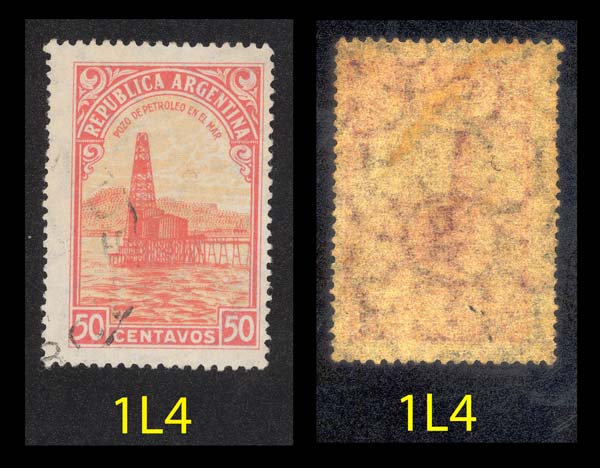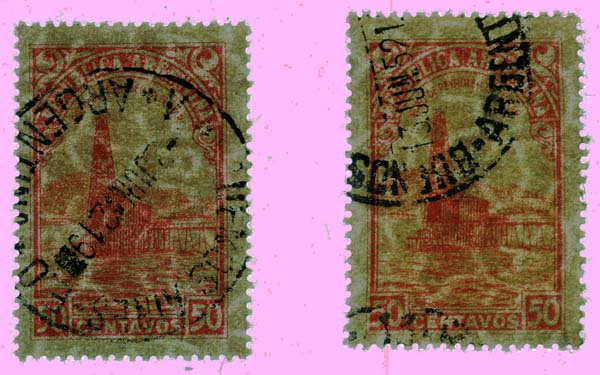Here they are, from 1,400 used specimens. Scott has three types... Watch out for the 1L5, it is super rare!
1E1, issued January 1936.

1E2, from 1937

1E3, from 1939 to 1944

1E4, from 1940

1E5, from 1943/44, rare, small RA

NGR, from 1945

NOP, unwatermarked opaque from 1947/48

2C, Straight Rays from 1949

CL2, clay from 1952

1L1, from 1951, deep orange background

1L2, from 1952, pale red, medium to gigantic RA, poorly defined

1L3, from 1955/56, bright white paper and deep yellow background

1L4, similar to 1L2, with a partially visible watermark

1L5, similar to 1L2, white Zarate, rare













































